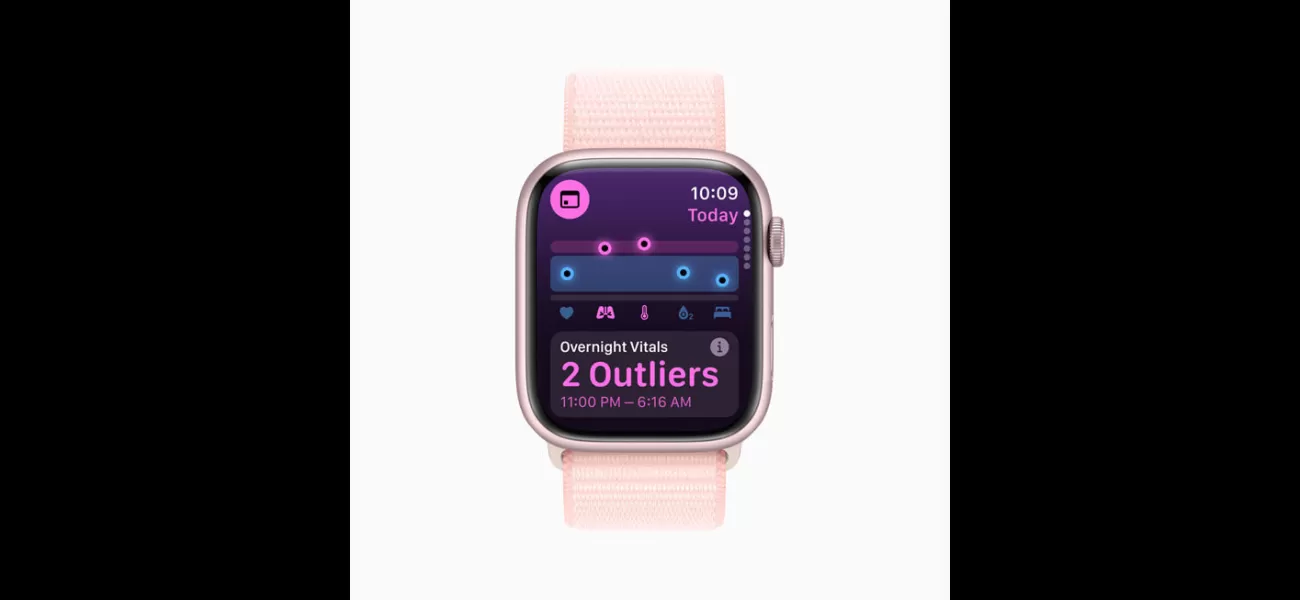The benefits and importance of wearing an Apple Watch while sleeping.
The Vitals app requires you to wear your Apple Watch while sleeping.
July 18th 2024.

For as long as I can remember, I've always taken off my Apple Watch before going to bed at night. It was a habit I formed early on, knowing that I needed to charge it overnight so that I could start the next day with a full battery. But according to Dr. Sumbal Desai, if we want to make the most of Apple's new Vitals app, we're going to have to change that routine.
During a call with 9news.com.au, Apple's vice president of Health explained that our bodies enter a basal state during sleep. This means that our body is at its most relaxed and stable state, making it the perfect time to gather accurate data. With the Vitals app, we can track our body's baseline over the course of a few weeks. This allows us to see any significant changes in our metrics, indicating that something may be off and requires our attention.
For those eager to try out the new app, a beta version is currently available for early adopters. But for the majority of Apple Watch owners, the Vitals app will be released later this year with the launch of watchOS 11. Along with this update, Watch users can expect a range of new features, including the ability to translate 20 different languages on their wrist and the convenience of double finger pinching to scroll. But the most exciting addition is the inclusion of data on our "Training Load," giving us a better understanding of our workout intensity and how it affects our body's recovery.
Compared to these new features, the Vitals app may seem like an old concept. After all, the Apple Watch has been collecting data on our heart rate, respiratory rate, wrist temperature, blood oxygen levels, and sleep quality for years. However, the app's secret sauce is its ability to combine all of this data into one place. By doing so, it provides us with a daily health status, giving us more actionable information to make informed decisions in our daily lives.
Dr. Desai encourages us to wear our Apple Watches to bed, stating that there has never been a better time to do so. With the Vitals app, we can receive notifications if two or more metrics are out of range. For example, if our heart rate and wrist temperature are high, it could be a sign of illness, alcohol consumption, or even our menstrual cycle. The app will alert us and make us aware of these changes, allowing us to take appropriate action.
It's no secret that the Apple Watch has played a significant role in saving lives. 9news.com.au has previously interviewed individuals who credit their Apple Watch for detecting health issues before it was too late. One such example is Lexie Northcott, a 16-year-old who ignored warnings about her low heart rate until her watch alerted her to a complete heart block. Stories like these are what continue to drive Apple's focus on health.
Dr. Desai expresses a deep sense of responsibility to impact people's health positively, as they have the privilege of being with us all the time. She reassures us that our data is encrypted on our devices, and Apple never has access to it. The goal is for the Vitals app to be our partner in health, continuously informing us and empowering us to make better decisions about our well-being.
During a call with 9news.com.au, Apple's vice president of Health explained that our bodies enter a basal state during sleep. This means that our body is at its most relaxed and stable state, making it the perfect time to gather accurate data. With the Vitals app, we can track our body's baseline over the course of a few weeks. This allows us to see any significant changes in our metrics, indicating that something may be off and requires our attention.
For those eager to try out the new app, a beta version is currently available for early adopters. But for the majority of Apple Watch owners, the Vitals app will be released later this year with the launch of watchOS 11. Along with this update, Watch users can expect a range of new features, including the ability to translate 20 different languages on their wrist and the convenience of double finger pinching to scroll. But the most exciting addition is the inclusion of data on our "Training Load," giving us a better understanding of our workout intensity and how it affects our body's recovery.
Compared to these new features, the Vitals app may seem like an old concept. After all, the Apple Watch has been collecting data on our heart rate, respiratory rate, wrist temperature, blood oxygen levels, and sleep quality for years. However, the app's secret sauce is its ability to combine all of this data into one place. By doing so, it provides us with a daily health status, giving us more actionable information to make informed decisions in our daily lives.
Dr. Desai encourages us to wear our Apple Watches to bed, stating that there has never been a better time to do so. With the Vitals app, we can receive notifications if two or more metrics are out of range. For example, if our heart rate and wrist temperature are high, it could be a sign of illness, alcohol consumption, or even our menstrual cycle. The app will alert us and make us aware of these changes, allowing us to take appropriate action.
It's no secret that the Apple Watch has played a significant role in saving lives. 9news.com.au has previously interviewed individuals who credit their Apple Watch for detecting health issues before it was too late. One such example is Lexie Northcott, a 16-year-old who ignored warnings about her low heart rate until her watch alerted her to a complete heart block. Stories like these are what continue to drive Apple's focus on health.
Dr. Desai expresses a deep sense of responsibility to impact people's health positively, as they have the privilege of being with us all the time. She reassures us that our data is encrypted on our devices, and Apple never has access to it. The goal is for the Vitals app to be our partner in health, continuously informing us and empowering us to make better decisions about our well-being.
[This article has been trending online recently and has been generated with AI. Your feed is customized.]
[Generative AI is experimental.]
0
0
Submit Comment





